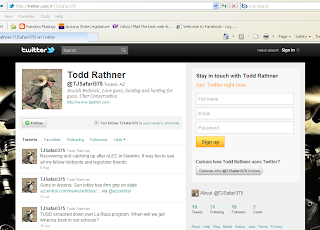To great
fanfare (and
ridicule) earlier this week, Rep. David Schweikert introduced
H.R. 2977, the COINS Act. If enacted into law, it would end the printing of $1 bills, instead replacing them with $1 coins.
He claims that the measure will save the taxpayers billions of dollars over the next 30 years.
What he doesn't mention is that his measure will give billions of taxpayer dollars to mining industry interests over the same period.
The composition of dollar coins, courtesy the US Mint's
website (
Cu = Copper, Zn =Zinc, Mn = Manganese, and Ni = Nickel) -
88.5% Cu
6% Zn
3.5% Mn
2% Ni
Weight of each coin: 8.1 grams, meaning that each coin contains 7.1685g of Cu.
Current
production level of dollar coins - 258 million
Projected production of dollar coins over 30 years, at current annual production level (258 million times 30 years) - 7.74 billion
The 30 year projected dollar coin production needed to replace paper bills, according to a
study from the Government Accountability Office (GAO) - 41 billion
Difference: 33.26 billion (4.3X as much as would be needed under the current system of paper bills and metal coins)
Additional pounds of copper (Cu) needed over the next 30 years, based on Schweikert's plan and GAO estimates (assuming no wastage or change in the composition of dollar coins): 525,635,627
Current price per pound of copper, courtesy
CNN - $3.28
Net increased revenue for the copper industry over 30 years (basic math): $1.724 billion
Likelihood that the increased demand for copper will result in higher prices for copper over the next 30 years, meaning the above figure is a conservative one (
my estimate): nearly 100%
Oh, and by the way, there are provisions in Schweikert's bill that would require the Federal Reserve to take the dollar coins issued since 1979 (Susan B. Anthony, Native American, and Presidential) out of circulation, likely increasing the production needed to meet the currency needs and making the above numbers conservative estimates.
Interesting campaign contributions to Schweikert this year (
and I haven't yet thoroughly examined individual contributions as yet), courtesy the FEC:
FREEPORT-MCMORAN COPPER & GOLD INC. CITIZENSHIP COMMITTEE 1/28/2011 $5000
KOCH INDUSTRIES INC POLITICAL ACTION COMMITTEE (KOCHPAC) 6/10/2011 $1000
KOCH INDUSTRIES INC POLITICAL ACTION COMMITTEE (KOCHPAC) 6/10/2011 $2000
FYI - Freeport-McMoran is one of the largest copper mining companies in the world, and Koch Industries is a huge conglomerate with its fingers in many areas, including mining and minerals.
Schweikert's bill has been assigned to the House
Financial Services Committee (note: Schweikert is a member of that committee).
Number of Republicans on the committee: 34
Number of Republicans on the committee who have received campaign contributions from either (
or both, as in the case of Schweikert) of the above PACs: 25
Generally, Financial Services Committee members receive
bribes "campaign contributions" from insurance, banking, investment, and real estate industry PACs. It's more than a little unusual for them to receive mining PAC money directly (
their normal benefactors may benefit from investments in mineral resources, but investments are their business, not mining).
However, when a bill like this comes along, apparently, so does the money.
Green PS -
While the exact composition of the paper used for federal reserve notes (dollar bills) is confidential, it is still basically *paper* and paper is made from trees, a renewable resource. If done properly, trees and other plants can be harvested, replanted, and reharvested several times during a typical human lifespan.
They only way that metals could be considered "renewable" is if human lifespans were measured not in years, decades, or even centuries, but instead in *epochs.* It takes millions of years for geological forces to create more ore once ore is removed from the ground.
Schweikert's bill is short-sighted - it generates relatively immediate profits for his campaign contributors, but at the cost to Americans of the permanent use of limited natural resources.
Notes and caveats:
The above estimates and calculations are based on current prices, which are subject to change (
I expect them to change, but have no idea how much, so there is no way for me to include those changes in calculations), on an assumption that the composition of dollar coins remains unchanged for the next 30 years (
again, I expect changes, but cannot even begin to guess what they will be, or when they will occur), and that there is no waste in the coin-making process that would necessitate the purchase of a greater quantity of metal than would theoretically be needed to manufacture the coins in a perfect production process (
all manufacturing processes have waste, but again, I have no knowledge of the wastage rate in the Mint's processes, so that number cannot be included in calculations here).
Also, there would be a benefit to the mining companies of Zinc (Zn), Nickel (Ni), and Manganese (Mn) (
the other elements in a dollar coin), but because those metals currently make up such a small percentage of the composition of dollar coins, I didn't include them in the calculations.
Later...




